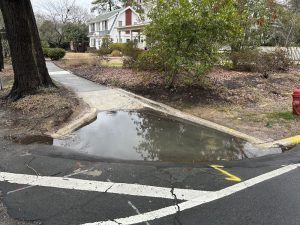Despite worries of voter intimidation, chaos at the polls, and post-election denialism, North Carolina’s midterm voting seems to have run smoothly.
“I can say without a doubt it was one of the smoothest elections I’ve ever been involved in here in North Carolina,” said Damon Circosta, chair of the North Carolina State Board of Elections. “And given all the pressure and all the challenges that election administrators face, that is quite a testament to the work that those folks do.”
By the time polls opened Tuesday, over 2 million voters had already cast early ballots in the midterm elections for positions ranging from state Supreme Court justice to U.S. senator. More than 1.5 million people voted on Election Day.
“I think the election that concluded last night was a positive sign for democracy in the country and in North Carolina,” said Asher Hildebrand, associate professor of public policy at Duke University and former chief of staff to U.S. Rep. David Price, a Democrat from North Carolina who is retiring from Congress.
Hildebrand noted that the worries many people had did not materialize. “We did not see on any significant scale political violence.…(nor) overt voter intimidation or suppression and, with Arizona as a potential exception, we have not seen on any significant scale, the losing candidates reject the outcome of the election and try to sue.”
And on Election Day, the North Carolina State Board of Elections reported no major irregularities at the polls.
Circosta credits the success to lessons learned from 2020, when officials had to adapt to the unusual circumstances of the COVID-19 pandemic. This year, the state Board of Elections also made a substantial effort to avoid confusion and misinformation by explaining before the election how voting and vote-counting work.
“The pre-bunking – as opposed to debunking – helped voters understand what it is that we do,” he said. This process included anticipating potential areas of voter confusion that could have led to unfounded concerns as the results trickled in.
“We were explaining to voters beforehand what things would look like on Election Day and explaining to voters beforehand why you might see, say, for instance, a gigantic Democratic Party lead early and then watch that lead erode away as more Election Day votes come in,” said Circosta.
Gerry Cohen, a member of the Wake County Board of Elections, said state turnout was “pretty good for a midterm.” He said about 50.5% of registered N.C. voters cast ballots this year. That is similar to 2018’s midterm turnout of 52.98%.
Circosta is aware of the extra scrutiny on elections officials. “We would be naive to think that there aren’t some folks out there who might try and disavow the results of the election. And all we can do is just show our work,” he said. “Thankfully, we haven’t seen here in North Carolina many folks trying to doubt the work we do.”
While some Republican candidates have drawn national attention for their reluctance to accept election results when they lose, Bo Hines, the Republican candidate in North Carolina’s highly competitive 13th Congressional District, conceded his race on Tuesday night.
“It certainly seemed gracious that he conceded,” said Cohen.
The results are unofficial until the final state canvass on Nov. 29.
“People say that counting ballots is simple,” said Cohen. “It’s not.”





